Best Religious Sites in Siena (including the Synagogue) for visitors on a cruise to the Port of Livorno
The shore excursions to Siena by cruise ships docking at the Port of Livorno will take you to a few churches like the Catherinian Basilica of St. Dominic but, unfortunately, many other interesting religious sites will be missed.
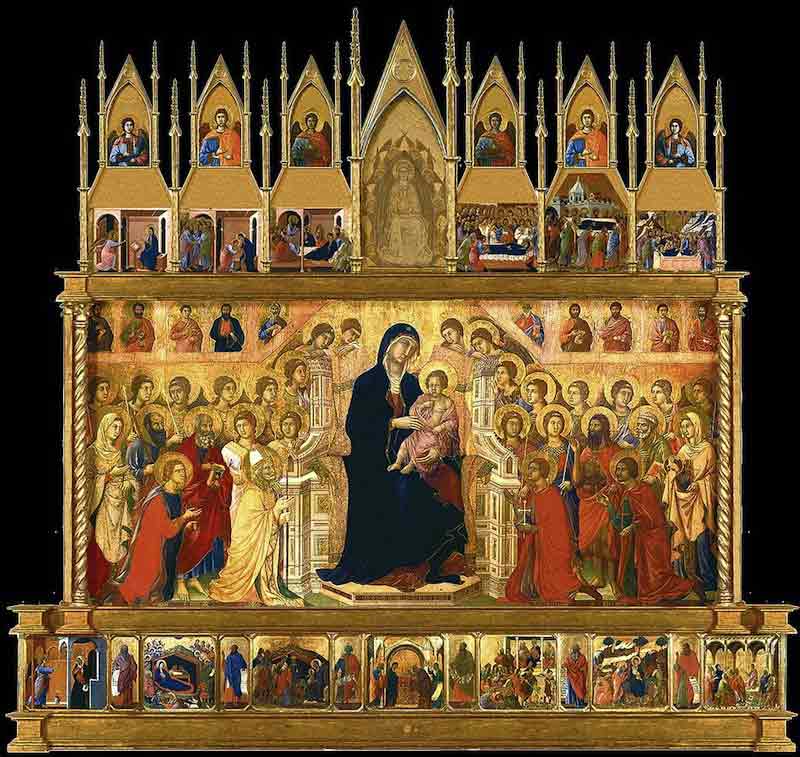
Maesta by Duccio Di Buoninsegna in the Duomo, Siena
Photo: Public Domain
Contents
- Cathedral
- Baptistery
- Crypt
- Catherinian Basilica
- House of Saint Catherine
- Saint Francis Church
- Saint Mary Basilica
- Saint Augustine Church
- Synagogue
- Oratorio di San Bernardino
Overview
The Duomo (Cathedral) is one of those sites rarely included in the shore excursions. However, if the cruise traveler decides to explore Siena independently, or on your own, you will be able to enjoy, or pick and select, many of the Siena's religious sites such as the Duomo (Cathedral), the Battistero and the Cripta.
For those of Jewish faith the Synagogue should not be missed. The visit to five other religious sites should also be considered: the churches of San Domenico, San Francesco, Santa Maria dei Servi, Sant’Agostino and the Casa di Santa Caterina.
1. Cathedral (Duomo)
The Duomo of Siena is an impressive green and white striped Romanesque-Gothic cathedral that dominates the city’s skyline. The massive structure, which was constructed between 1215 and 1263, is believed to have been built on the site on a previous church that had honored Mary, which in turn had been built on a temple to Minerva.
Although there were plans to enlarge the Duomo in the early 14th century, construction stopped when the plague swept the city in 1348.
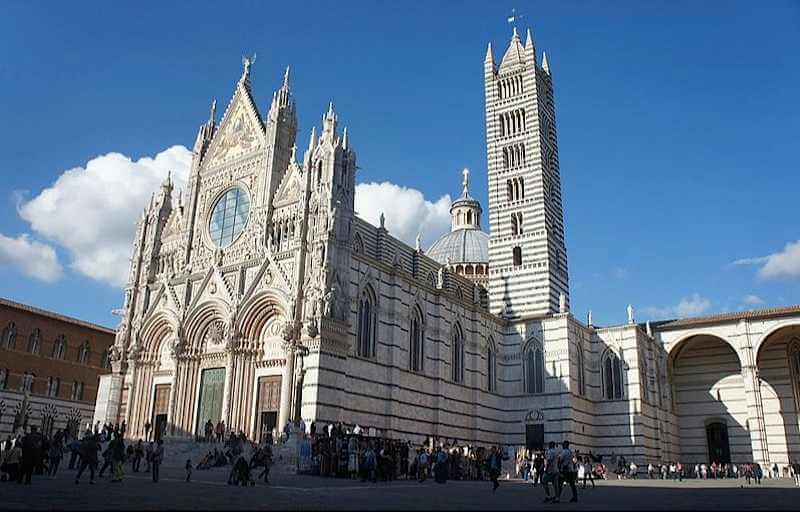
Duomo
Photo: Ondrej Zvacek CC-by-SA
The interior of the Duomo is completely covered in colorful decoration, making it every bit as breathtaking as its exterior. Looking down, the most ornate marble mosaic floor in Italy is truly stunning. Created by about 40 different artists between the 14th and 16th centuries, the 56 panels represent scenes from the Old Testament, virtues sibyls, and allegories.
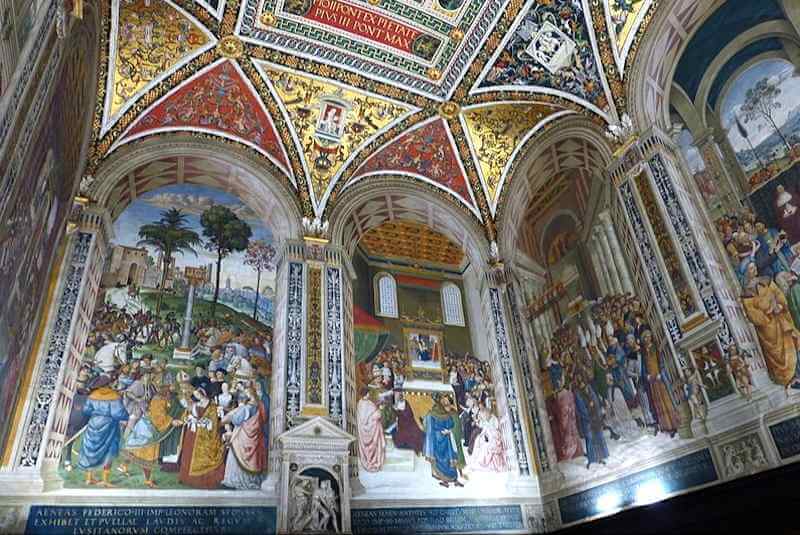
Frescoes in the Duomo
Photo: Chenspec CC-by-SA
While the rest of the Duomo’s interior decoration is also magnificent, the works of art contained within its walls make it an important museum of Italian artistic achievement. The most valuable pieces include Donatello’s “The Feast of Herod,” sculptures by Bernini and Michelangelo and a Gothic painting by Simone Martini and Lippo Memmi.
Address: Piazza Duomo
Website: Cathedral Site in English
2. Baptistery (Battistero)
The Duomo’s baptistery is located near the remains of the “Duomo Nuovo” and was built in the 14th century. Its vaulted ceilings were frescoed by Vecchieta in the late 1440s, but the reason to visit the Baptistery is the baptismal font.
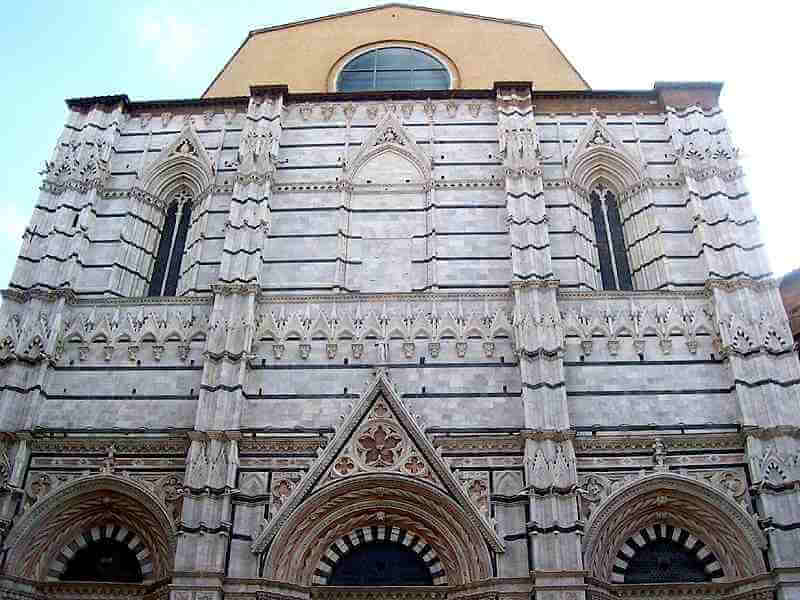
Duomo Battistero
Photo: Markus Mark CC-by-SA
It is a wonderful work with Gothic frames and gilded brass panels cast by the early Renaissance’s most significant Sienese and Florentine sculptors: Jacopo della Quercia, Giovanni di Turino, Lorenzo Ghiberti, Giuliano di Ser Andrea and Donatello.
Address: Piazza San Giovanni
Website: Baptistery Site in English
3. Crypt (Cripta)
The Duomo’s Crypt was never actually used for burials, but its location underneath the Cathedral’s choir makes one feel as though they are descending into a crypt as they walk down the stairs. Built in the 13th century at the same time as the Duomo, the frescoed crypt is believed to have been used as a porch before it was filled in and abandoned.
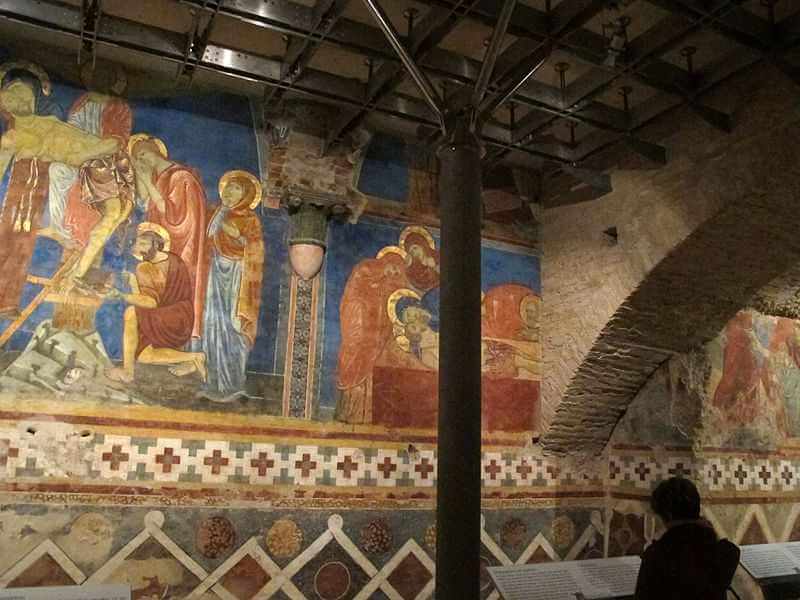
Duomo Cripta
Photo: Sailko CC-by-SA
It was rediscovered in 1999 and opened to the public in 2003.
Address: Piazza Duomo
Website: Crypt Site in English
4. Catherinian Basilica of St. Dominic (Basilica Cateriniana di San Domenico)
The Catherinian Basilica of St. Dominic is one of the largest and most important religious sites in Siena. It was built to honor Santa Caterina in 1226, expanded in the 1300s, and then restored after a fire in 1531. The nave is plainly decorated, but the numerous chapels are filled with beautiful works of art.
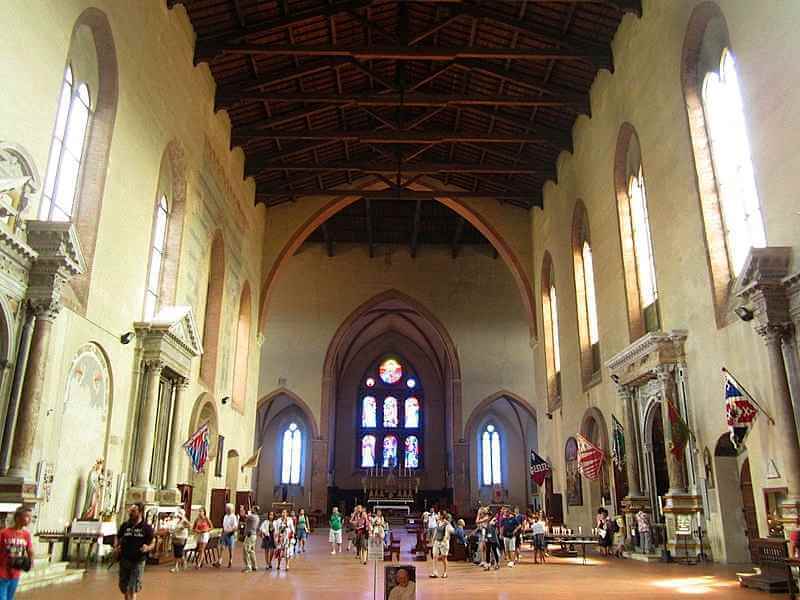
Basilica di San Domenico
Photo: Luca Aless CC-by-SA
Some of the most notable pieces include a fresco by Andrea Vanni that contains the oldest known portrait of Catherine, Francis George’s “Adoration of the Shepherds,” and Alexander Casolani’s “Nativity of the Virgin.” It houses the relics of St. Catherine including "Her Sacred Head", which can be a disturbing sight.
Address: Piazza San Domenico
5. The House of Saint Catherine (Casa di Santa Caterina)
The Casa di Santa Caterina is the birthplace of Saint Catherine, who was a famous Sienese mystic that fought corruption in the church. Perhaps her biggest political accomplishment was to convince the pope to leave Avignon, go to Rome, and there restore the papal seat. She died in 1380, canonized in 1461, and named a doctor of the church in 1970.
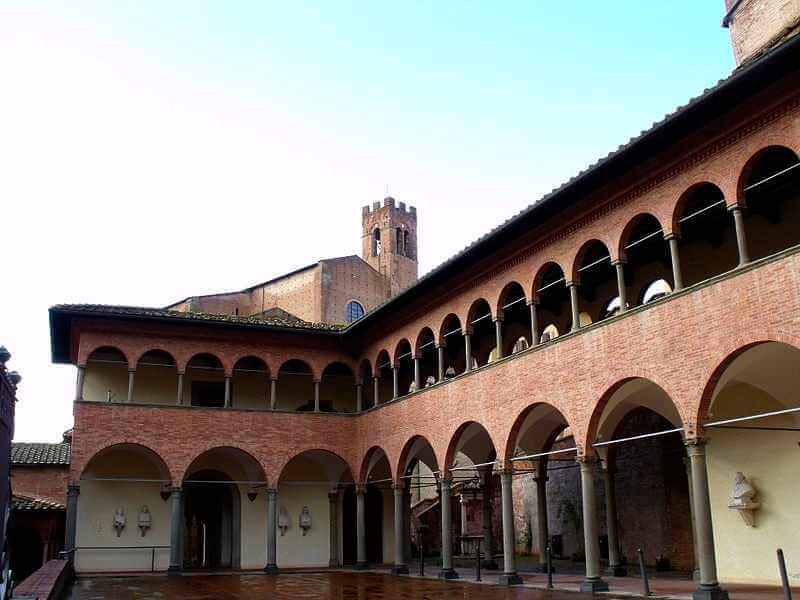
Casa Santuario Di Santa Caterina
Photo: Ligadue CC-by-SA
The Council of Siena bought Saint Catherine’s house in 1466 and turned it into a sanctuary where they kept records of saints and precious works. Today visitors to the house can see Saint Catherine’s old cell now covered in frescoes depicting her life, as well as the Oratorio del Crocifisso where it is believed that Saint Catherine received her stigmata.
Address: Costa di Sant’Antonio 6
Website: www.caterinati.org
6. Saint Francis Church (San Francesco)
On the northeastern side of the Piazza Salimbeni lies the Gothic San Francesco Church. It was constructed in the style of the Mendicant Orders between 1326 and 1475. The reason to visit San Francesco is the numerous pieces of art housed within the church.
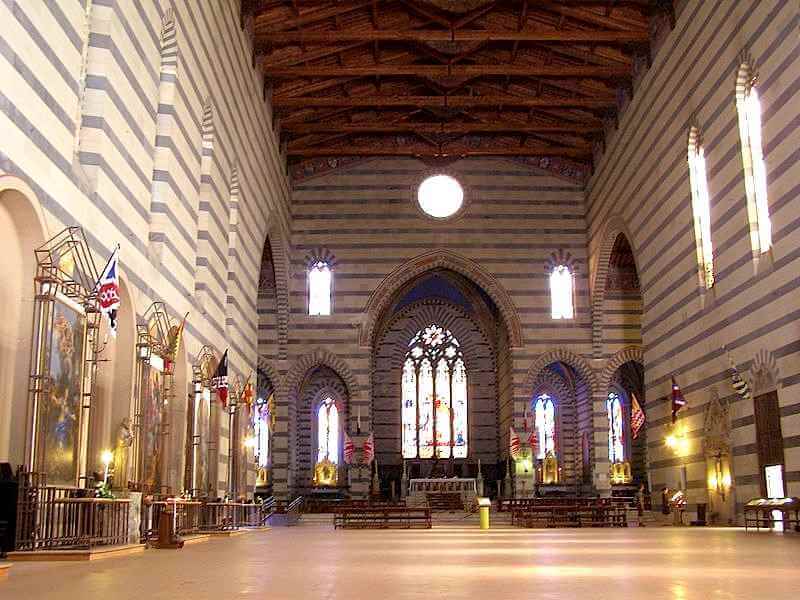
Chiesa Di San Francesco
Photo: Andrzej Otrebski CC-by-SA
Some of the most notable works are by Jacopo Zucchi, Pietro Lorenzetti, Giuseppe Nicola Nasini, and Jacopo di Mino del Pellicciaio.
Address: Piazza San Francesco
7. Saint Mary Basilica (Santa Maria dei Servi)
The Santa Maria dei Servi is a massive medieval church that sits on a hill looking over the Valdimontone. It was constructed in the 13th century on the site of the ancient San Clemente Church.
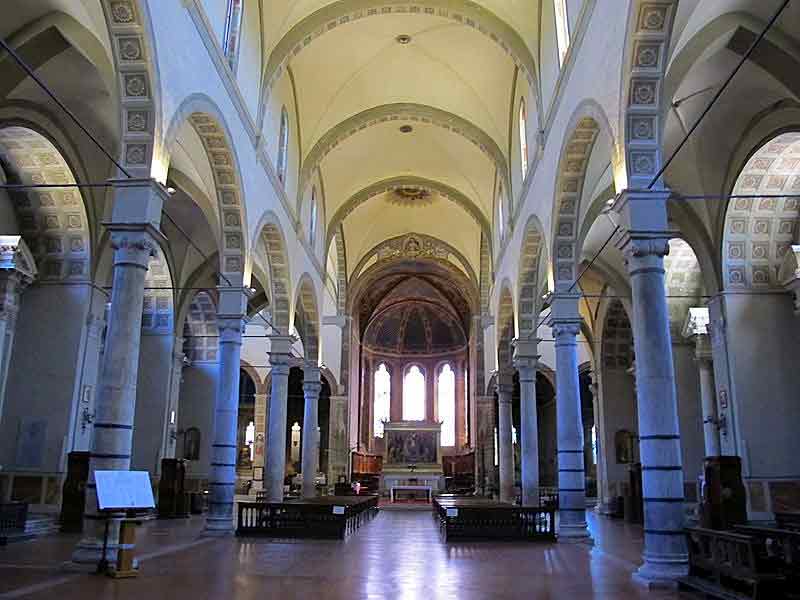
Basilica Di Santa Maria Dei Servi
Photo: Sailko CC-by-SA
Though facade-less, Santa Maria dei Servi houses masterpieces by the likes of Coppo di Marcovaldo, Rutilio Manetti (Nativity ), Matteo di Giovanni (Massacre of the Innocents), Pietro Lorenzetti (Ascension of John the Evangelist) and Taddeo di Bartolo (Adoration of the Pastor).
Address: Piazza A. Manzoni
8. Saint Augustine Church (Chiesa di Sant’Agostino )
Construction of the Chiesa di Sant’Agostino began in 1258, but took about 50 years to complete. Over the centuries the church has undergone numerous renovations, including Luigi Vanvitelli’s redesign of the interior in the 18th century.
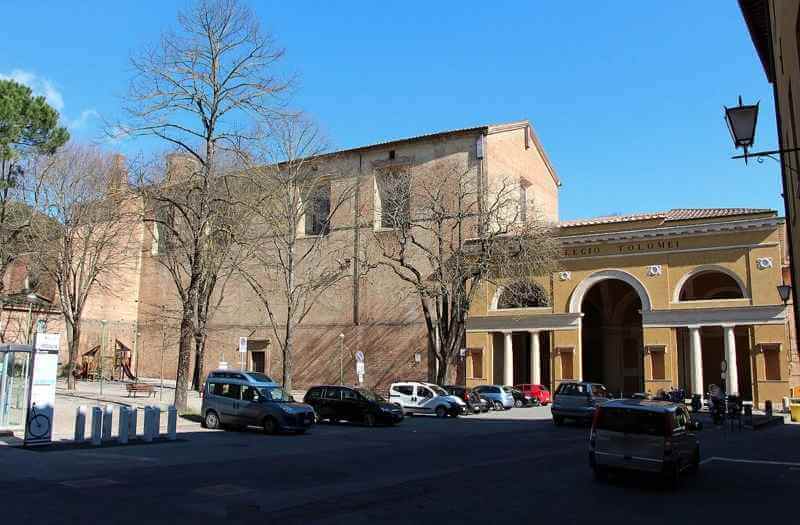
Chiesa Di Sant Agostino
Photo: Sailko CC-by-SA
The church is home to quite a few pieces of art, but the most notable are Perugino’s “Crocefissione” and Lorenzetti’s “La Maesta.”
Address: Prato di San Agostino
9. Synagogue (Sinagoga)
Siena’s Synagogue was designed in 1786 by Giuseppe del Rosso. The guided tours of the building can be arranged, but the two plaques on the front of the Synagogue are the real reason to visit.
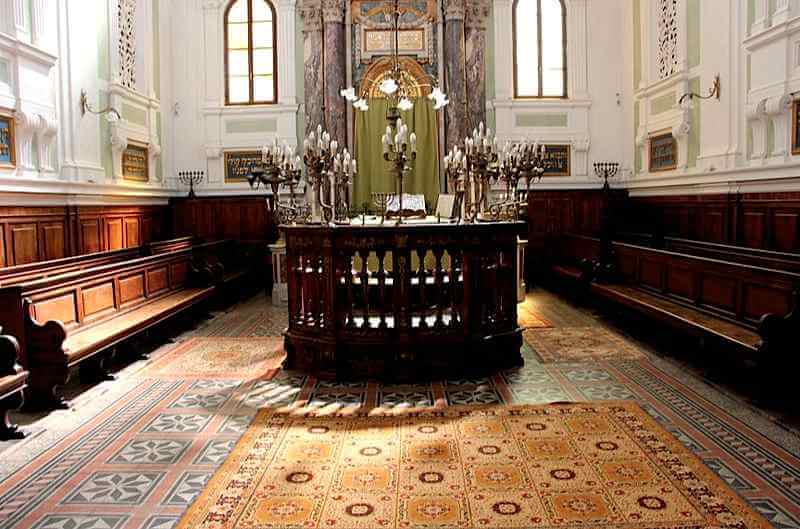
Synagogue
Photo: Sailko CC-by-SA
The first plaque commemorates the 13 Jews who were taken from their homes and burned in the square by a mob on June 28, 1799. The second plaque memorializes the Sienese Jews killed during World War II.
Address: Vicolo delle Scotte 14
10. Oratorio di San Bernardino e Museo Diocesano
The Oratorio di San Bernardino was built in the late 15th century on the exact spot where Saint Bernardine is believed to have preached his first sermon. The Oratory is covered in frescoes by artists that include Sodoma, Girolamo del Pacchia, Domenico Beccafumi, Domenico Manetti, Vanni, Salimbeni, and Rutilio.
The Museo Diocesano is filled with sacred art from the 13th to the 19th century taken from the diocese of Siena churches. Some of the artists represented in the impressively extensive collection include Deifebo Burbarini, Bernardino Mei, Ventura Salimbeni, Domenico Manetti, Rutilio, and Crescenzio Gambarelli.





